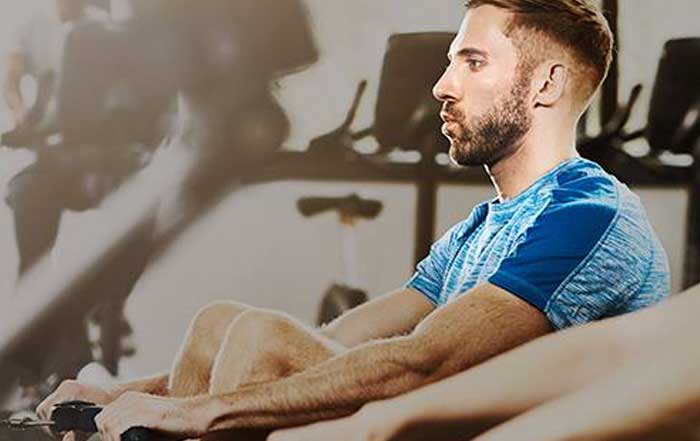In the evolving corporate world of 2025, Japan stands at the forefront of redefining what it means to build a healthy and motivated workforce. Traditionally known for its culture of precision, diligence, and long working hours, Japan’s business environment has undergone a profound transformation in recent years. The recognition that employee well-being is not merely a personal matter but a strategic business priority has reshaped management philosophy, workplace design, and company policies across the country.
Japanese firms have begun to understand that sustainability is not limited to the environment—it also applies to people. The collective shift toward wellness-centered management stems from the acknowledgment that mental, physical, and emotional health directly influence performance and long-term productivity. This awareness, accelerated by global discussions about work-life balance and digital stress, has encouraged Japanese corporations to integrate health-oriented policies into every level of business operations.
Wellness practices in Japan are not seen as imported trends but as an organic extension of long-standing cultural traditions. The philosophy of ikigai, or “reason for being,” reflects the pursuit of purpose and balance in life, while kaizen, meaning “continuous improvement,” drives employees and managers to refine both personal and professional habits incrementally. Together, these principles create an environment where health and work coexist harmoniously rather than compete for attention.
In this context, the top five office wellness practices adopted in Japan provide a compelling model for companies worldwide. These initiatives merge scientific insights with cultural authenticity, creating a workplace ecosystem that fosters harmony, engagement, and innovation. To explore additional wellness perspectives, readers can visit wellnewtime.com/wellness.html, where discussions on global health and wellbeing trends are regularly featured.
1. The Rise of Mindfulness and Meditation in the Japanese Workplace
One of the most defining aspects of Japan’s wellness revolution is the integration of mindfulness and meditation into corporate routines. This movement reflects both a cultural return to Zen roots and a modern understanding of how mindfulness improves focus, emotional intelligence, and resilience. Unlike Western interpretations that often frame mindfulness as a relaxation tool, in Japan it represents a disciplined approach to mental clarity—a bridge between ancient wisdom and corporate efficiency.
Major corporations such as Sony, Toyota, and Mitsubishi UFJ Financial Group (MUFG) have institutionalized mindfulness programs that employees engage in daily or weekly. Sony’s Tokyo headquarters, for instance, provides meditation rooms where workers can take ten-minute mindfulness breaks throughout the day. The company also collaborates with neuroscience researchers to study how meditation influences cognitive performance and creativity in innovation teams.
At Toyota Motor Corporation, mindfulness is intertwined with physical and environmental wellness. Employees participate in shinrin-yoku, or forest bathing sessions, organized in nearby natural parks to reconnect with nature and decompress from digital overstimulation. The company’s offices have been redesigned with biophilic architecture, emphasizing natural light, greenery, and materials like bamboo and stone that evoke calm and reduce stress levels.
Mindfulness initiatives are not limited to large corporations. Startups and small enterprises in Japan have also begun adopting mindfulness technology through AI-driven wellness platforms. Apps such as Awarefy and MindFi Japan offer guided sessions and breathing exercises that adapt to employees’ stress data collected via wearables. These tools reflect Japan’s vision of Society 5.0—a human-centric digital transformation that integrates technology with social well-being.
Government and academic institutions are also playing an essential role in legitimizing these practices. The Ministry of Health, Labour and Welfare (MHLW) supports research on workplace mental health, while the Riken Brain Science Institute collaborates with private firms to measure mindfulness’s neurological benefits. These partnerships reinforce Japan’s reputation for merging empirical science with cultural traditions.
By blending Zen philosophy, neuroscience, and digital innovation, Japan has demonstrated that mindfulness can evolve from a personal habit into an organizational asset. It fosters empathy among leaders, reduces absenteeism, and creates a calm corporate culture that values long-term sustainability over short-term output. Readers interested in exploring the psychological aspects of modern wellness can visit wellnewtime.com/mindfulness.html, where similar topics are examined in depth.
2. Nutrition and Ergonomics: Building Health from the Inside Out
Beyond mindfulness, Japanese companies have embraced nutrition and ergonomics as the foundation of their wellness strategies. The link between diet, physical comfort, and productivity is well established in Japanese culture, where balance and moderation define both cuisine and lifestyle. This philosophy has been translated into corporate canteens, office layouts, and work routines.
Many of Japan’s leading corporations, including Panasonic, Fujitsu, and Shiseido, now operate company cafeterias that emphasize nutrient-rich meals designed by in-house dietitians. These menus often feature the traditional ichiju-sansai concept—a meal structure consisting of one soup and three side dishes—to ensure dietary variety and balance. Ingredients are locally sourced, seasonal, and often organic, reflecting the country’s growing emphasis on sustainability and agricultural ethics.
At Panasonic’s WELLTH Lab, culinary wellness merges with environmental responsibility. The company reduces food waste through AI-based meal planning systems that track consumption patterns and adjust portion sizes. Employees are encouraged to eat together rather than at their desks, reinforcing the social and psychological dimensions of wellness.
Equally important is Japan’s focus on ergonomics—a discipline that reflects the meticulous attention to human comfort and efficiency. Companies such as Fujitsu and Hitachi have redesigned office furniture, lighting, and ventilation systems to minimize strain and fatigue. Adjustable standing desks, dynamic seating that promotes spinal health, and real-time posture monitoring through wearable sensors are becoming standard features.
This approach extends to home offices as well, with corporations providing stipends for employees to set up ergonomic workstations for remote work. Japan’s early adoption of hybrid work models post-2020 has ensured that wellness policies encompass both physical offices and digital workspaces.
In partnership with universities such as Keio University School of Medicine, corporations are conducting studies on the physiological effects of prolonged sitting, air quality, and digital fatigue. Their findings have informed national wellness standards that other countries now look to replicate.
The philosophy underpinning these efforts is simple: when employees are physically comfortable and nourished, they can perform at their highest potential without compromising their long-term health. Those seeking a deeper understanding of workplace health innovation can explore related coverage on wellnewtime.com/health.html.
🌸 Japan's Top 5 Corporate Wellness Practices
2025 Guide to Building Healthy, Motivated Workforces
3. Physical Fitness and Active Work Lifestyles in Corporate Japan
In Japanese business culture, movement and physical vitality have always been regarded as integral to well-being. The tradition of rajio taiso, or radio calisthenics, dates back to 1928 when national broadcasts encouraged citizens to perform simple stretching routines each morning. Almost a century later, this collective practice has been revived and modernized within corporate environments as part of Japan’s effort to create more active workplaces.
Modern Japanese offices now blend digital technology and movement science to encourage regular activity during the workday. Corporations such as Rakuten, ANA Holdings, and SoftBank have launched structured fitness programs tailored to diverse employee needs. Rakuten’s Tokyo headquarters includes a state-of-the-art fitness center that offers yoga, pilates, and strength training sessions, while employees receive app-based reminders to take short “movement microbreaks” every 90 minutes. These subtle interventions—stretching, walking, or posture correction—combat the health risks associated with sedentary work and promote sustained energy throughout the day.
SoftBank Group has adopted wearable technology to gamify movement. Employees use smart wristbands that track daily activity, heart rate, and sleep quality. The data integrates with the company’s wellness platform, offering incentives such as extra vacation days, wellness vouchers, and recognition awards for meeting fitness goals. This innovative approach transforms physical health from a personal pursuit into a shared organizational achievement.
The Japanese Ministry of Health, Labour and Welfare has amplified these efforts through its “Smart Life Project,” encouraging businesses nationwide to create fitness-conscious policies. The initiative includes recommendations for company-sponsored sports teams, walking meetings, and stair-use campaigns to integrate natural movement into daily work routines.
These corporate strategies reflect Japan’s cultural ethos of kaizen, or continuous improvement, by transforming small, consistent actions into lasting behavioral change. Even small startups have embraced wellness-driven office layouts featuring standing conference tables and treadmill desks to promote physical dynamism.
Remote employees also benefit from Japan’s innovative fitness infrastructure. Platforms like FiNC Technologies offer AI-powered health coaching, virtual classes, and progress tracking tailored to remote workers’ needs. The platform has become a benchmark for balancing digital convenience with physical vitality—something that resonates deeply in Japan’s hybrid work future.
This growing emphasis on movement is not merely aesthetic or moralistic; it yields measurable outcomes. Studies from Tokyo University of Science have found that companies implementing structured movement programs see up to a 20% reduction in absenteeism and a marked increase in cognitive performance during afternoon hours. Such data reinforces the link between physical health, mental clarity, and productivity.
For readers exploring more on wellness and physical activity trends, wellnewtime.com/fitness.html features ongoing analyses of how organizations worldwide are incorporating fitness into professional environments.
Japan’s philosophy of merging ancient rituals with modern technologies demonstrates that corporate wellness need not be rigid or prescriptive. It is a living, evolving system that honors balance, connection, and motion—principles that make employees not only more productive but more fulfilled.
4. Mental Health Support and Emotional Wellbeing Initiatives
No transformation in Japan’s workplace wellness landscape has been as impactful as the growing emphasis on mental health. Once a subject rarely discussed in corporate circles, psychological wellbeing has become an urgent priority for both the government and the private sector. The cultural legacy of karoshi—a term meaning “death by overwork”—sparked national introspection and policy reforms that redefined how organizations address stress, burnout, and work-life balance.
By 2025, Japan’s top corporations view mental wellness not as an optional employee benefit but as a core component of risk management and human capital strategy. NTT Group, one of Japan’s largest telecommunications companies, leads the sector with its “Heartful Workplace” initiative, which integrates counseling services, AI-assisted mood tracking, and digital mindfulness resources. Employees can access licensed therapists through secure mobile apps, maintaining confidentiality while receiving professional guidance.
Similarly, Hitachi, Ltd. has pioneered a holistic mental health model that combines technology with empathy. Its “Work Style Reform” program introduces flexible working hours, mandatory digital detox periods, and “recovery days” following major project deadlines. The initiative reflects a shift from the culture of endurance toward one of self-awareness and rest, reinforcing the idea that productivity thrives when workers feel emotionally supported.
The Japanese government’s Health and Productivity Management Organization Certification System, developed by the Ministry of Economy, Trade and Industry (METI), has institutionalized wellness accountability. This certification recognizes companies that excel in monitoring and improving employees’ mental and physical health through structured, data-driven policies. As of 2025, over 3,000 companies have received certification, representing a nationwide shift toward proactive wellness governance.
Technology continues to play a vital role in Japan’s mental health movement. Startups such as Ubie and Empath Inc. are redefining how corporations monitor emotional wellness. Empath’s AI software analyzes voice tone and speech patterns during calls or meetings to detect subtle indicators of stress and fatigue. The data, anonymized and aggregated, allows HR teams to identify systemic wellness issues and intervene early without stigmatizing individuals.
These technological tools coexist with cultural interventions that encourage open dialogue about wellbeing. Many companies organize mental health workshops, emotional intelligence seminars, and peer-support groups where employees discuss challenges in safe environments. The practice of nemawashi—traditionally a process of informal discussion before major decisions—has evolved into a mechanism for emotional transparency, helping colleagues express concerns without fear of judgment.
Meanwhile, Japan’s hybrid work culture has increased the focus on psychological connection. Managers are trained in empathetic leadership and encouraged to schedule virtual “check-ins” to maintain human warmth even in remote settings. The objective is not merely to prevent burnout but to cultivate a culture of kokoro no yutaka-sa, or emotional richness—a value deeply rooted in Japanese philosophy.
For a comprehensive look at wellness and mental health strategies in workplaces, visit wellnewtime.com/wellness.html and explore expert insights on emotional resilience, mindfulness, and holistic health.
Japan’s corporate world has learned that the true measure of success lies not in hours worked but in the quality of life sustained. This evolution in mindset marks a global milestone in how businesses can protect and empower their greatest asset: the human mind.
5. Environmental Wellness and the Green Office Movement
The concept of wellness in Japan extends beyond the individual to encompass the physical and ecological environment. Recognizing that the workplace atmosphere profoundly influences energy, focus, and satisfaction, Japanese organizations have invested heavily in eco-friendly infrastructure, sustainable design, and biophilic architecture. This integration of environmental and personal health reflects the national philosophy of mottainai, a term that expresses respect for resources and aversion to waste.
Shiseido Company, Limited, a pioneer in corporate sustainability, has transformed its Tokyo headquarters into a wellness-centric ecosystem. Its offices feature vertical gardens, renewable energy systems, and natural ventilation designed to mimic the rhythm of outdoor environments. The company reports that such features reduce fatigue and increase collaboration, proving that environmental harmony enhances both wellbeing and innovation.
Mitsubishi Estate Co., one of Japan’s largest real estate developers, has incorporated wellness principles into its Otemachi and Marunouchi office projects, which prioritize green rooftops, daylight optimization, and energy-efficient air systems. These developments align with Japan’s broader national goal of achieving carbon neutrality by 2050 and demonstrate how business infrastructure can promote sustainability and human health simultaneously.
Another company setting benchmarks is Panasonic Corporation, whose WELLTH Lab explores how smart home and office technologies influence health outcomes. By using intelligent air filtration, circadian lighting, and ergonomic design, Panasonic creates office environments that reduce cognitive strain and improve circadian rhythm alignment—especially important for employees managing hybrid schedules and jet-lagged global operations.
Environmental wellness also manifests in behavioral practices. Many companies now encourage “green commuting” through bicycle-sharing programs, telecommuting incentives, and public transportation subsidies. Others have implemented “no paper Fridays” or monthly sustainability challenges that engage employees in environmental responsibility. These small but meaningful gestures reinforce a sense of shared purpose that transcends job roles.
For professionals seeking to understand the environmental dimension of wellness, wellnewtime.com/environment.html offers in-depth discussions on sustainability and wellness design.
This environmental consciousness connects deeply with Japan’s cultural traditions. From the minimalist aesthetics of wabi-sabi, which values simplicity and imperfection, to the practice of seasonal awareness known as shun, Japanese culture encourages mindfulness of one’s surroundings. Corporate wellness programs inspired by these principles foster serenity and focus in fast-paced business settings.
Japanese environmental wellness is not confined to architecture but extends into policy. The government’s Green Office Certification Program evaluates how well companies reduce carbon footprints while supporting human wellbeing. These assessments measure indoor air quality, energy consumption, noise levels, and employee satisfaction, forming a comprehensive framework that redefines sustainability as a living standard rather than a compliance metric.
The global relevance of Japan’s eco-wellness model cannot be overstated. As corporations around the world seek to reconcile environmental ethics with business performance, Japan’s example demonstrates that sustainability and profitability are not mutually exclusive. Instead, they represent a new dimension of corporate responsibility—one that sustains both ecosystems and human lives.
To explore more about sustainability-driven workplace innovations, visit wellnewtime.com/business.html and wellnewtime.com/lifestyle.html, where such evolving trends are analyzed through a global lens.
The Role of Technology in Japan’s Corporate Wellness Revolution
The rise of digital innovation has fundamentally transformed how Japan manages and measures wellness in the workplace. Rather than treating technology as a distraction or burden, Japanese companies have reimagined it as an enabler of health, balance, and sustainability. From biometric wearables to AI-driven analytics, technology now acts as the invisible backbone of Japan’s wellness ecosystem—personalizing support, predicting burnout, and promoting smarter work habits.
Fujitsu Limited has become a pioneer in this space, introducing a health analytics platform that collects real-time data on heart rate variability, sleep cycles, and posture from employee wearables. Using artificial intelligence, the system identifies patterns associated with stress or fatigue and provides personalized recommendations—encouraging users to take breaks, stretch, or meditate. This form of predictive wellness management ensures that intervention happens before problems escalate, replacing reactive HR approaches with data-driven prevention.
Canon Inc. has developed a different angle of technological wellness, focusing on environmental optimization. Through the integration of Internet of Things (IoT) devices and AI algorithms, Canon’s offices automatically adjust temperature, humidity, and lighting levels to maintain comfort and energy efficiency. Employees report fewer headaches, improved focus, and a greater sense of relaxation. These subtle yet measurable benefits highlight Japan’s commitment to using technology as a human-centered enhancement rather than a purely mechanical convenience.
The government’s vision of Society 5.0, which emphasizes technology in the service of humanity, has deeply influenced how corporations approach wellness. Health technology is not seen as a luxury but as an essential part of national innovation policy. The Ministry of Economy, Trade and Industry (METI) supports numerous pilot programs that combine robotics, AI, and cloud-based platforms to improve occupational health outcomes. The result is a seamless blend of digital efficiency and emotional intelligence that defines Japan’s modern corporate culture.
AI-powered chatbots and virtual assistants have also become integral to mental and physical health support. Line Corporation, Japan’s most popular messaging app, offers in-app wellness assistants that provide stress management advice and connect users to professional counseling resources in seconds. Similarly, DeNA Co., known for its mobile technology, has integrated wellness reminders into its digital ecosystem, helping employees monitor water intake, posture, and screen time.
These innovations are redefining what it means to “go to work.” Wellness is no longer confined to physical office walls—it travels with the employee across devices, schedules, and continents. Remote workers, freelancers, and traveling executives can now maintain consistent well-being through cloud-based dashboards and virtual wellness communities that foster accountability and connection.
Technology’s role is not to replace human relationships but to enhance them. It gives managers real-time insights into employee wellness trends, enabling data-informed leadership decisions. It empowers HR departments to design inclusive programs that respect individuality while nurturing collective health. And, most importantly, it ensures that the future of work in Japan remains humane, resilient, and adaptable.
Readers interested in how innovation continues to shape health and lifestyle practices can explore wellnewtime.com/innovation.html, where emerging technologies redefining wellness are examined across global contexts.
Cultural Foundations of Wellness and Work-Life Harmony
Japan’s success in creating sustainable wellness practices cannot be understood without examining its deep cultural foundations. Unlike Western models that often compartmentalize wellness into distinct categories—fitness, nutrition, or therapy—Japan’s approach stems from an integrated worldview that regards body, mind, community, and nature as inseparable.
The principle of wa, meaning harmony, lies at the core of Japanese organizational behavior. It fosters cooperation, mutual respect, and emotional balance in group settings. This sense of unity extends naturally into corporate wellness programs, where teamwork and collective participation enhance engagement. Morning exercises, shared lunches, and company wellness challenges are all structured around communal rather than individual benefit, reflecting the belief that a harmonious group produces better results than isolated excellence.
Equally influential is the concept of omotenashi, which translates as wholehearted hospitality and care. In corporate wellness, this manifests as the company’s responsibility to care deeply for its employees—not only as workers but as human beings. Employers design wellness policies with empathy, ensuring accessibility across age groups, genders, and job levels. This spirit of hospitality differentiates Japan’s approach from transactional wellness programs found in many Western corporations.
Another crucial influence is the notion of karada wo taisetsu ni suru, meaning “cherish your body.” This philosophy pervades every element of daily life, from how food is prepared to how offices are designed. Japanese employees are encouraged to honor their physical and mental health as a form of gratitude, not self-indulgence. It is this ethical dimension of self-care that has allowed wellness practices to become cultural norms rather than corporate mandates.
Even traditional art forms reinforce the importance of mindfulness and flow in work. Practices like ikebana (flower arrangement) and shodo (calligraphy) are used in corporate workshops to teach patience, focus, and creative balance. These sessions remind employees that productivity and serenity are not opposites—they are complementary forces that emerge through rhythm and awareness.
The national government further strengthens this cultural integration through awards like the Health and Productivity Management Organization Certification, recognizing companies that excel in promoting well-being and balance. This institutional acknowledgment ensures that wellness remains a matter of both pride and accountability.
Cultural continuity is what gives Japan’s wellness initiatives authenticity. They are not reactive responses to global trends but natural evolutions of an existing ethos. The result is a society where corporate wellbeing aligns with social wellbeing—where taking care of employees is inseparable from taking care of the nation.
For readers exploring lifestyle and wellness traditions rooted in cultural harmony, visit wellnewtime.com/lifestyle.html, where the intersection of heritage and modern wellbeing is discussed in global contexts.
Lessons for Global Businesses
Japan’s approach to corporate wellness offers valuable insights for organizations around the world. It demonstrates that sustainable wellbeing arises not from isolated interventions but from cohesive ecosystems. Wellness in Japan is built on five interconnected pillars—mindfulness, nutrition, physical fitness, mental health, and environmental consciousness—all supported by technology and cultural integrity.
The first lesson is integration. Japan does not separate employee health from business strategy. Wellness metrics are incorporated into annual evaluations, HR policies, and even corporate reporting frameworks. Companies like Hitachi and Panasonic link wellness outcomes directly to innovation indices, recognizing that healthier teams create better products and services.
The second lesson is continuity. Wellness programs in Japan are not short-term campaigns but enduring commitments. By embedding practices like meditation, ergonomic design, and green offices into corporate DNA, Japan ensures that wellness becomes part of everyday life, not an occasional retreat or incentive.
The third lesson is human-centric technology. Japan’s digital wellness tools are designed to serve emotional and physical needs, not to monitor or control. This distinction is vital for maintaining trust and engagement in a world increasingly driven by data.
Lastly, Japan exemplifies purpose-driven leadership. Executives openly participate in wellness programs, modeling vulnerability and balance for their teams. This top-down involvement reinforces authenticity and helps dismantle lingering stigmas around self-care.
Global corporations, particularly in Europe, North America, and Asia-Pacific, are already adopting Japanese-inspired wellness frameworks. Biophilic design, mindfulness-based leadership, and workplace sustainability initiatives owe much to Japan’s example. For organizations exploring similar integrations, wellnewtime.com/business.html and wellnewtime.com/world.html provide global analyses of best practices that merge productivity with human flourishing.
As economies become more interconnected, the demand for culturally adaptable wellness systems will continue to rise. Japan’s model stands as both an inspiration and a roadmap for building work environments that are resilient, empathetic, and aligned with the rhythms of life.
Closing Up - Japan’s Blueprint for the Future of Work and Wellness
In 2025, Japan has emerged as a global exemplar of workplace wellness, offering a vision of how ancient philosophy and modern science can converge to create healthier, more balanced societies. The country’s top companies—spanning industries from technology to finance and design—have collectively demonstrated that the future of work depends not merely on digital transformation or profit growth but on human sustainability.
The five leading wellness practices—mindfulness integration, nutritional and ergonomic design, physical fitness programs, mental health support, and environmental wellness—together form a holistic ecosystem that nurtures both individuals and institutions. They prove that wellbeing is not a luxury or a secondary HR initiative but the foundation of strategic advantage.
Japan’s approach reveals an essential truth: when people thrive, organizations excel. When balance replaces burnout and purpose replaces pressure, creativity flourishes. This principle resonates across borders, inspiring companies in the United States, United Kingdom, Germany, Singapore, and Australia to reevaluate how they define success in an age of constant change.
As businesses worldwide face growing challenges—technological overload, social disconnection, and environmental urgency—the Japanese model serves as a guide to rebuilding corporate life around health, empathy, and sustainability. It offers not just a framework for productivity but a philosophy for living well in the modern world.
For ongoing insights into global wellness, environmental sustainability, and innovation-driven lifestyles, readers can explore wellnewtime.com/travel.html, wellnewtime.com/news.html, and wellnewtime.com/wellness.html, where WellNewTime continues to explore the stories shaping a healthier, more conscious global future.
Ultimately, Japan’s corporate wellness evolution is a reflection of its enduring wisdom: true progress begins not in the boardroom, but in the balance of mind, body, and spirit. By embracing that balance, the nation has crafted a future of work that honors both human potential and collective harmony—an inspiring model for the world to follow.










